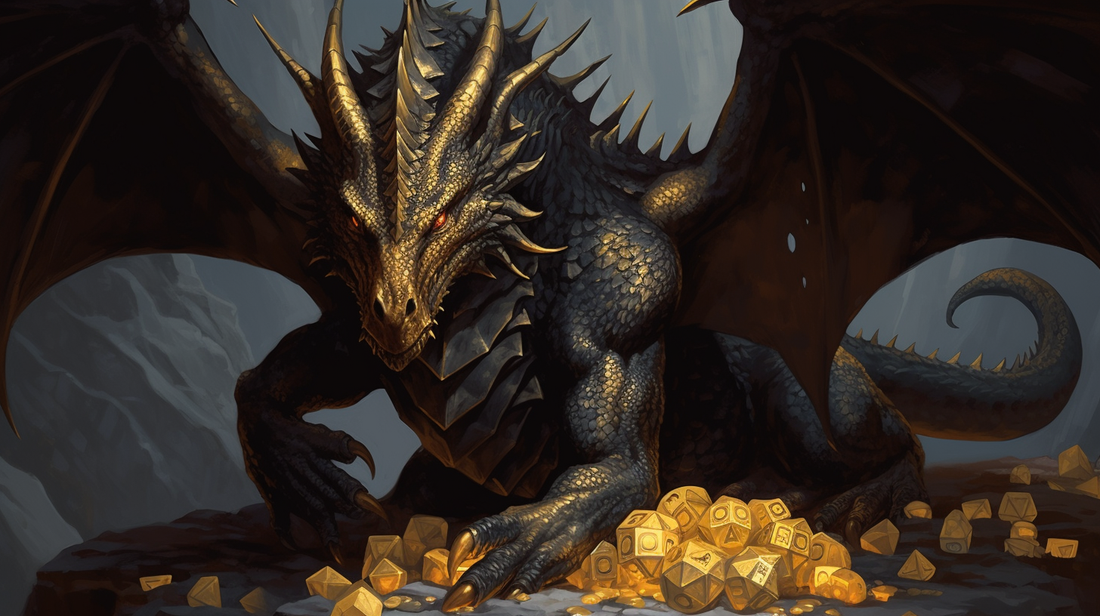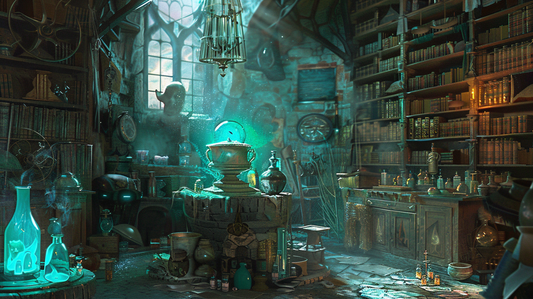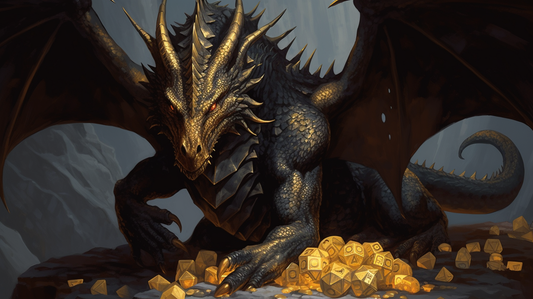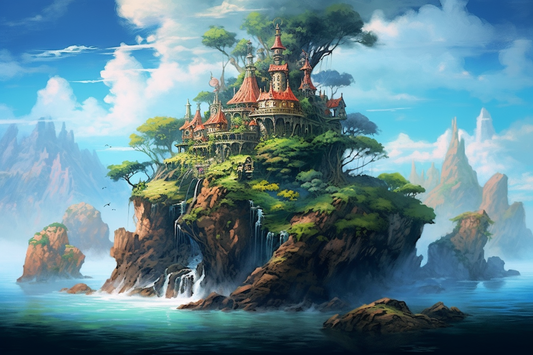
What is Dungeons and Dragons and How to Play for Beginners
Quinn JohnsonShare
Looking to learn more about Dungeons and Dragons (DnD)? You’re not alone. Millions of fantasy-loving individuals across the globe have treasured DnD and for good reason. It is full of adventure, exploration, teamwork, problem solving, and much more. In this comprehensive guide we’ll equip you with the basic knowledge and materials needed to join in on the fun of playing this iconic game.
- What is Dungeons and Dragons?
- How to play Dungeons and Dragons
- What is needed to play Dungeons and Dragons?
What is Dungeons and Dragons?

Dungeons and Dragons is first and foremost a tabletop role-playing game that has been around for nearly half a century. It has undergone numerous iterations and revisions over the years, but the basic concept remains the same: a group of players get together and create characters that they use to embark on adventures in a fantasy world.
The game is played with a Dungeon Master (DM) who serves as the narrator and referee, and a group of players who each control a single character. The DM creates the world and the adventures that the players' characters will embark on, while the players make decisions for their characters and role-play their actions and interactions with the world and each other. Here are some helpful tips for new dungeon masters.
One of the unique aspects of DnD is that it is a collaborative storytelling experience. The DM creates the basic outline of the adventure, but the players have a lot of agency in how they approach challenges and interact with the world. This allows for a lot of creativity and flexibility in the gameplay, and each session can be wildly different depending on the group and the choices they make.
The core mechanic of DnD is the use of dice to determine the outcomes of actions. Each character has a set of abilities and skills, and when they attempt to do something that has a chance of failure, the DM will ask them to roll a die (or a combination of dice) to see if they succeed. For example, if a character is trying to pick a lock, the DM may ask them to roll a 20-sided die (also known as a d20) and add their proficiency in lockpicking or sleight of hand. When the sum of the dice roll and proficiency modifier meets or exceeds the difficulty level established by the DM, the character achieves success.
Characters in DnD also have a set of statistics, or stats, that represent their capabilities in various areas. These stats can enhance a character’s abilities to perform certain actions and hinder other abilities as well. For example, a character might have a high-strength stat, which would make them better at physical tasks such as lifting heavy objects or wielding a sword.
Multiple races and classes are available to choose from when creating a character. Race represents the character's species, such as human, elf, or dwarf, and each race has its own set of racial traits and abilities. The class represents the character's profession or role in the party, such as a fighter, wizard, or rogue. Each class has its own unique abilities and abilities, and the combination of race and class can significantly impact a character's abilities and playstyle.
In addition to the core gameplay mechanics, DnD also has a rich and detailed lore and setting. The game is set in a fantasy world that is filled with magic, mythical creatures, and ancient civilizations. Players can choose to have their characters be a part of this world or create their own custom setting.
DnD has a reputation for being a complex and intimidating game, and while it can certainly be intimidating for new players, it is also a lot of fun. The game is highly social and encourages teamwork, strategic thinking, and creativity. It is a great way to spend an evening with friends, and it can also be a way to meet new people and make new friends.
One of the top reasons why DnD is such a popular game is its adaptability to group size and circumstance. The game can be played with just a few people or with large groups, and it can be played in person or online. There are also many different published adventure modules that DMs can use to run a game, as well as an endless array of online resources and tools.
How to Play Dungeons and Dragons

1. Gather a group
The first step to playing Dungeons and Dragons is to gather a group of friends who are interested in playing. Dnd is meant to bring people together in a very social environment, but how many people do you actually need? Ideally, you should have at least 3-5 players, including a Dungeon Master. It’s okay to have more than five players, however, gameplay may become slower when increasing the number of players especially during combat.
2. Choose a setting and characters
Next, you will need to decide on a setting for your game. DnD is set in a fantasy world, but you can choose to use an existing setting, such as the Forgotten Realms, or create your own custom world.
Once you have a setting, it is time to create your characters. Each player will need to create a character sheet, which includes information about their character's stats, abilities, and background. You can decide whether you want to play a dwarf, elf, gnome, dragonborn, or more in addition to selecting which class best suits you such as a wizard, barbarian, or druid.
3. Learn the basic rules
DnD has a set of core rules that govern gameplay, and it is important that everyone in the group has a basic understanding of these rules. The DM should be familiar with the rules and be able to explain them to the other players as needed.
There are many online resources and tutorials available to help you learn the basic rules of DnD, including the official DnD website and YouTube channels. You can also find beginner-friendly rulebooks and starter sets that are specifically designed to help new players learn the game.
4. Start playing
Once you have your group, setting, and characters all set up, it is time to start playing. The DM will present the players with a scenario or adventure to embark on, and the players will make decisions for their characters and role-play their actions and interactions with the world and each other. They’ll use dice to determine the outcomes of their actions which is where the excitement of the storytelling comes into play.
5. Have fun!
The most important thing to remember when playing DnD is to have fun. DnD is a collaborative storytelling experience, and the goal is to enjoy the adventure and the company of your friends. Don't worry too much about the rules or getting everything perfect – the point of the game is to have a good time.
If you are new to DnD, it is natural to feel a little overwhelmed or unsure of what to do. Don't be afraid to ask for help or clarification from the DM or other players. DnD is a very inclusive and welcoming community, and everyone was a beginner at some point.
What is needed to play Dungeons and Dragons?

If you're new to DnD and want to give it a try, there are a few things you'll need to get started.
1. DnD group and Dungeon Master
First and foremost, assembling a group of players is essential, typically including a Dungeon Master (DM) and three to seven participants. The DM assumes the role of the game's storyteller, expertly narrating the world, non-player characters (NPCs), and the situations encountered by the players. Conversely, the players craft their own distinctive characters, complete with their own backgrounds, capabilities, and motivations, which they will embody throughout the game.
2. Rulebooks and reference materials
The game heavily relies on rulebooks and reference materials. Core rulebooks like the Player's Handbook (PHB), Dungeon Master's Guide (DMG), and Monster Manual (MM) offer comprehensive guidance and regulations for gameplay. The PHB assists players in character creation, comprehension of game mechanics, and exploration of diverse classes, races, spells, and equipment. The DMG aids the DM in constructing adventures, designing encounters, and managing the game world. Meanwhile, the MM presents a wealth of creatures and adversaries for the players to encounter. These rulebooks maintain consistency, fairness, and equilibrium within the game, serving as invaluable resources for both the DM and the players.
3. Character sheet
DnD character sheets are essential tools that players use to bring their unique characters to life within the game. These sheets serve as a record of the character's abilities, skills, and progression throughout the adventure. They provide a structured format to track important details such as the character's name, race, class, and background. Additionally, character sheets include sections to record attributes, abilities, equipment, spells, and other crucial information that helps players navigate the game world. By filling out and referring to their character sheets, players can easily reference their character's abilities, make informed decisions, and immerse themselves fully in the role they have created.
5. DnD dice set
Playing DnD commonly involves the use of a dice set. The renowned 20-sided die, also known as the "d20," is frequently employed, alongside other polyhedral dice like the four-sided (d4), six-sided (d6), eight-sided (d8), ten-sided (d10), and twelve-sided (d12) dice. Each type of dice corresponds to a distinct range of numbers, determining the outcomes of various actions such as attacks, skill checks, and saving throws. The element of chance introduced by rolling dice adds an exhilarating touch of suspense and unpredictability to the game. There are different types of dice (acrylic, wood, metal, sharp-edge, etc.) so use this guide to learn which type of dice you should buy or might enjoy most.
6. Optional supplementary materials
Players may opt to utilize supplementary materials to enrich their gameplay experience. These materials can include campaign modules or adventure books that offer pre-written scenarios, quests, and storylines for the DM to utilize or adapt. Additionally, players may incorporate miniatures, tokens, or battle maps to visualize combat encounters and the spatial aspects of the game. Some groups may even employ digital tools such as virtual tabletop platforms or character-building software, which can enhance immersion, streamline gameplay, and support the development of creative storytelling.
Final Thoughts
In summary, DnD is a rewarding experience that brings people together, fosters creativity and teamwork. And while it may seem overwhelming to new players, we hope this guide was helpful in providing the essential knowledge and materials needed to overcome any obstacles. With a little preparation and a willingness to learn, anyone can join in. So now we encourage all newcomers to gather friends, create characters, and embark on an epic fantasy adventure together.



